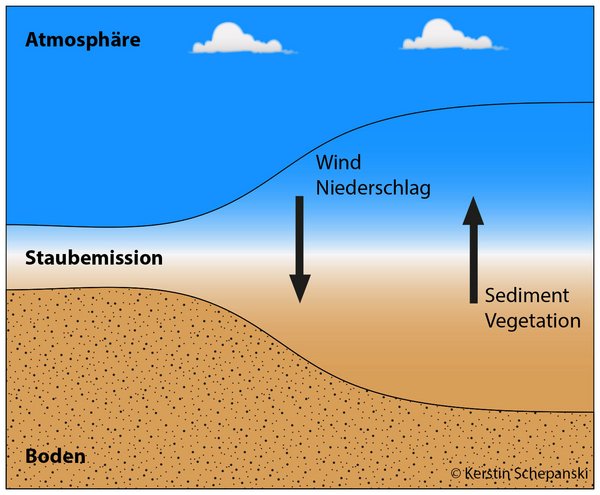
Fig. 1: Schematic representation of dust processes at the boundary of soil and atmosphere (Figure: K. Schepanski)

With an annual global emission flow of about 2000 megatons per year, mineral dust contributes significantly to global atmospheric aerosol pollution. It changes the radiation and stimulates processes of cloud and precipitation formation. Mineral dust is essential for understanding the Earth system, but detailed knowledge of the atmospheric dust cycle and its feedback mechanisms is still limited. Synergetic approaches show promising results to decipher the complexity of the dust cycle. The modelling department of TROPOS deals with a combination of different aspects of the dust cycle.

Fig. 1: Schematic representation of dust processes at the boundary of soil and atmosphere (Figure: K. Schepanski)
Dust sources and dust emission are at the beginning of the atmospheric life cycle of mineral dust aerosol. As the place of origin of the dust particles in the atmosphere, knowing when-where-how much dust is introduced into the atmosphere is crucial for the subsequent transport of dust clouds to distant regions.
The emission of dust particles as the first element of the atmospheric dust cycle can be seen as a process at the boundary between atmosphere and soil (Fig. 1). A supply of fine sediment particles must be present; at the same time, the wind speed near the ground must be sufficiently high to introduce particles into the lower atmosphere, the boundary layer. So there are places where dust emission is limited due to sediment supply, and places where dust emission is limited due to low wind speeds.
In order to characterize the atmospheric dust cycle and thus contribute to the study of the spatio-temporal fluctuations of desert dust, we investigate various influencing factors:
To investigate the spatio-temporal fluctuations of desert dust emissions, methods of numerical modelling and satellite remote sensing are combined. Specific dust sources that have so far been underrepresented in models include alluvial sediments and fire-induced dust emission.
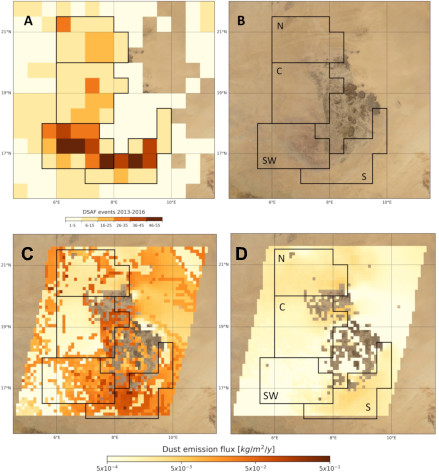
Fig. 2: The total number of dust events for the Air Mountains obtained from MSG-SEVIRI satellite images (A). True color image of the study area (B). The images below show the results of the model dust emission flux including alluvial sources (C) and without these sources (D). (Illustrations from Feuerstein and Schepanski (2019), doi.org/10.3390/rs11010004).
Dust emissions in dry valleys and riverine sediments often act as a source of dust in North Africa and are subject to a spatio-temporal change in terms of their erodibility. Annual fluctuations in local dust emissions are frequently observed. Based on a characterization of the temporal variability of this dust source type, the representation in the numerical model can be improved (Fig. 2).
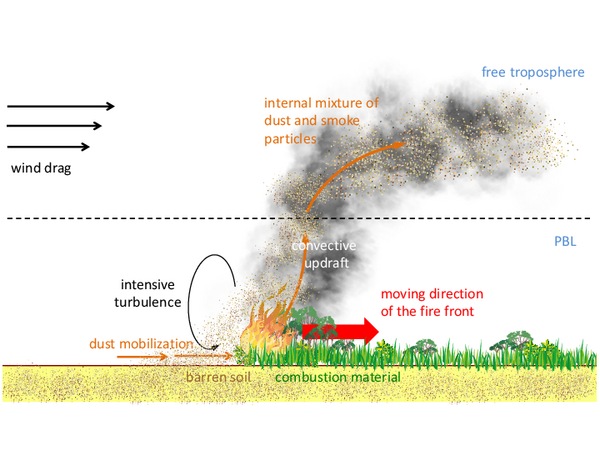
Fig. 3: Conceptionofthe emissions of mineral dust from vegetation fires. Illustration from Wagner et al. (2018), doi.org/10.5194/acp-18-11863-2018.
Emission of dust particles in can occur in conjunction with vegetation fires. In plumes of smoke from vegetation fires one can often find traces of mineral dust, which is whirled up by the fire-induced winds. To estimate this dust emission flux, a synergistic dust emission parameterization has been developed that includes both the saltation and turbulence-driven dustflow (Fig. 3).
Atmospheric transport of mineral dust aerosols
To investigate the large-scale transport of Saharan dust, including its sources and sinks, simulations are carried out using the regional transport model COSMO-MUSCAT and the global aerosol climate model ECHAM-HAM. Ground-based remote sensing and satellite data as well as in-situ measurements of field campaigns serve to evaluate the simulation results and to continuously improve the parameterization of dust mobilization.
Nutrient supply due to deposition of Saharan dust was estimated in the tropical North Atlantic on the basis of results of the COSMO-MUSCAT model for individual events (Fig. 4). In addition, for a characterization of the seasonal and interannual variability of dust inputs into the atmosphere, multi-year simulations are carried out with the regional model and compared with satellite data.
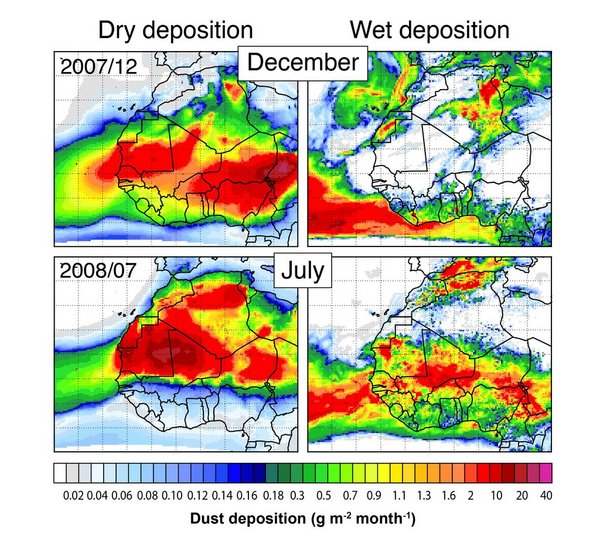
Fig. 4: Modelled distribution of dry and wet deposition of Saharan dust. (B. Heinold/TROPOS)
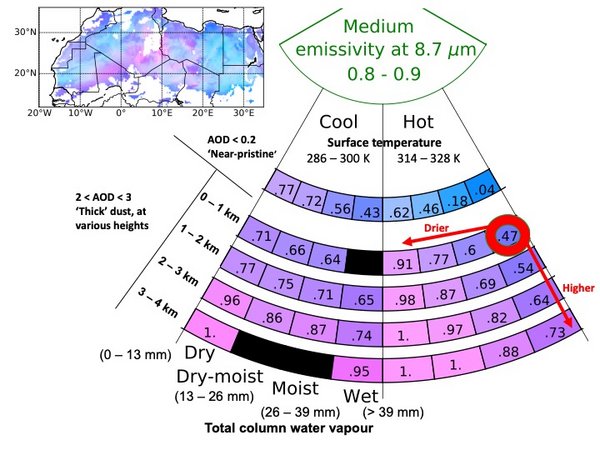
Fig. 5: Average desert dust RGB colors simulated by COSMO-MUSCAT-RTTOV, divided into areas of surface temperature (cool - hot), water vapor content (dry-wet) and dust layer height. The values increase counterclockwise. The numbers on each segment indicate the mean red value with two decimal places.I nset: Simulated SEVIRI Desert Dust RGB Image, 1200 UTC, June 17, 2012. (see Banks et al., 2019, doi:10.5194/acp-19-6893-2019)
The influence of atmospheric composition and soil properties on the color of the dust aerosol in MSG-SEVIRI false color images was analyzed with the aerosol transport model COSMO-MUSCAT and the radiation transfer model RTTOV. The resulting "dust" color in the RGB composite images was examined in terms of surface temperature, humidity, and dust layer height. Dust appears pink in the images, due to high red values in the RGB color scheme. This becomes particularly clear when the atmosphere is dry, the dust layer is optically thick and lies at higher altitudes (Fig. 5).
Effects atmospheric mineral dust particles
Dust particles influence the prognosis of temperature and flow fields as well as cloud dynamics by modifying the long- and short-wave radiation fluxes. Thus, with the help of the modeled spatiotemporal distribution of mineral dust, the inflows of the dust particles are quantified via the modification of the long- and short-wave radiation fluxes on the prognosis of temperature and flow fields as well as cloud formation.
In addition to its effects onatmospheric radiation and cloud properties, mineral dust reduces local air quality and is generally associated with negative effects on human health. In the context of the assessment of the health risk posed by Saharan dust in Cape Verde, a source-dependent classification of dust mineralogy in the dust model has begun to be taken into account, i.e.the mineralogical composition of the dust may have an influence on the microbiome of the dust particles.